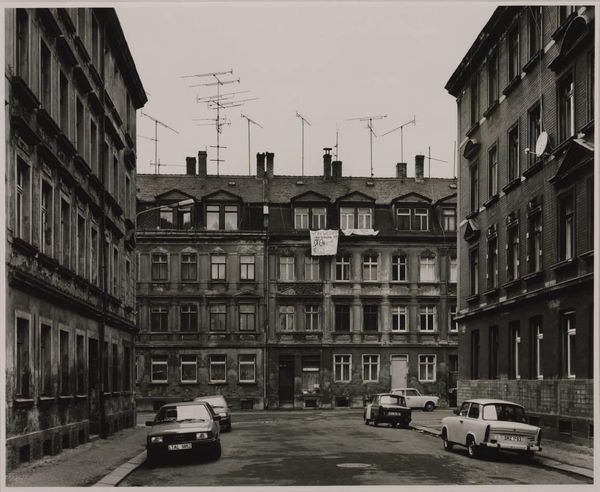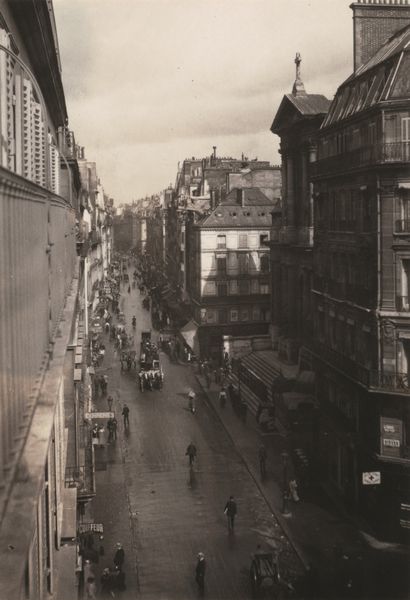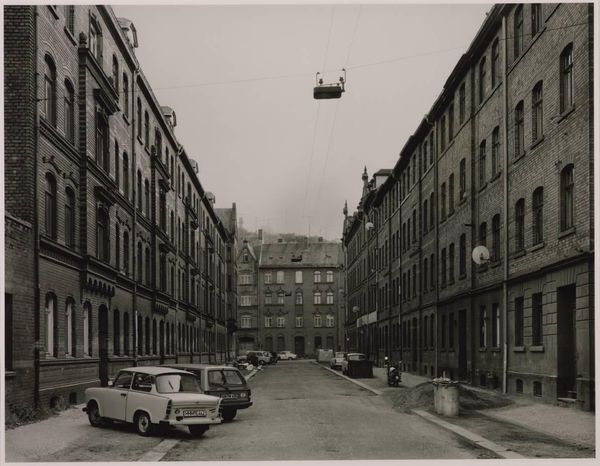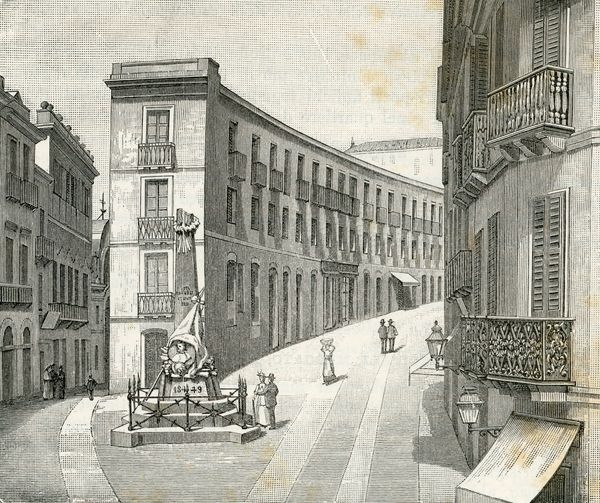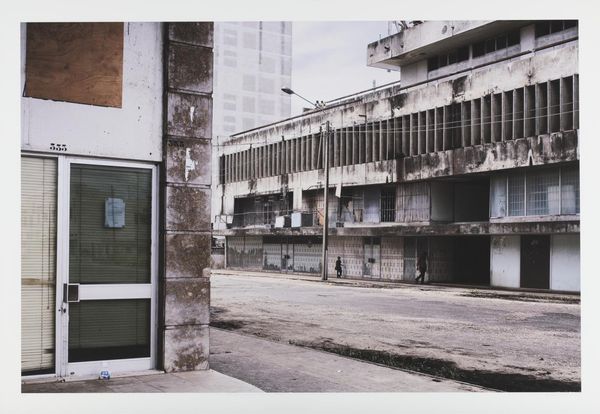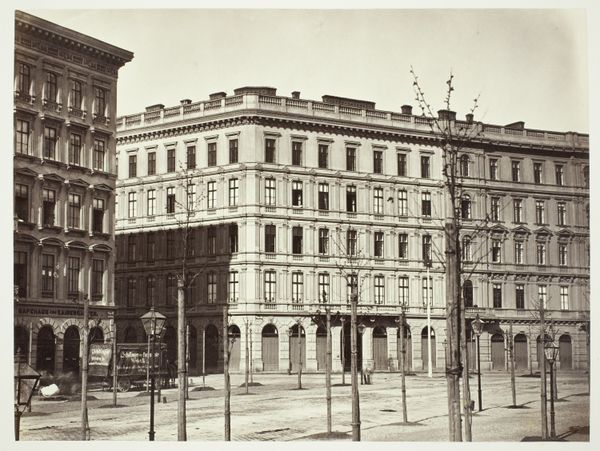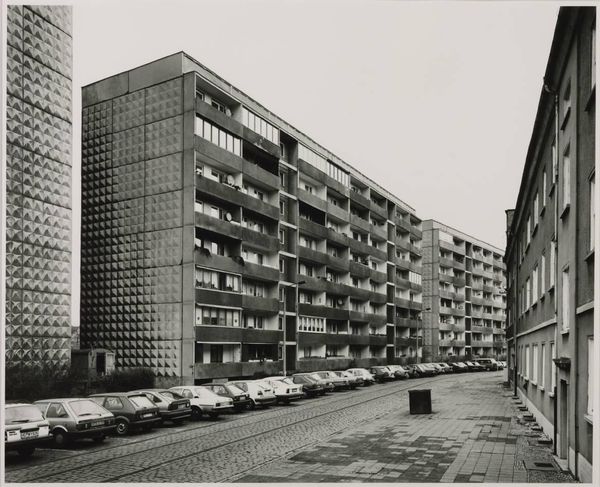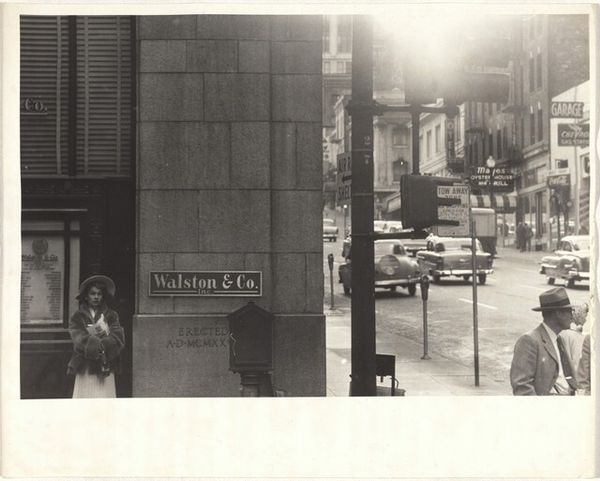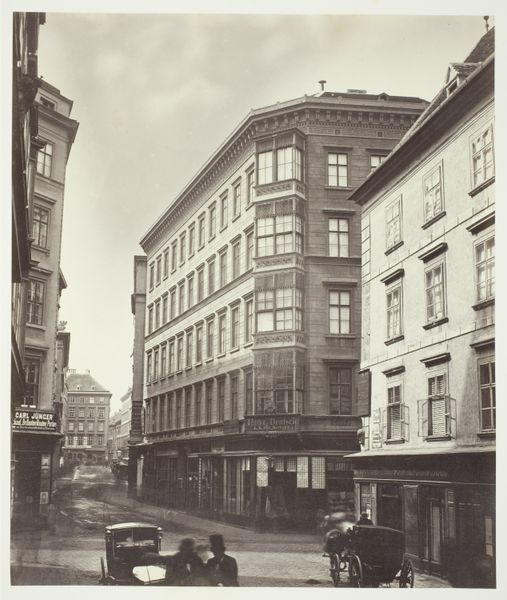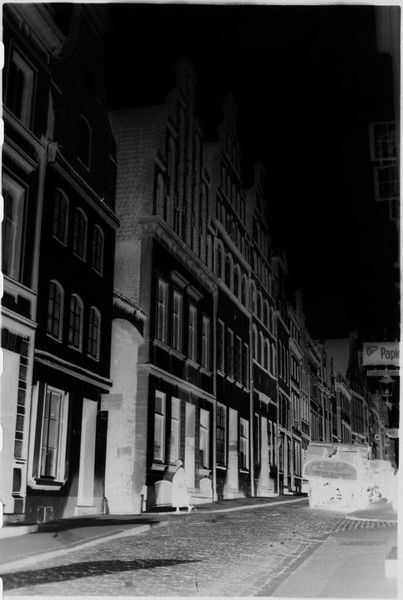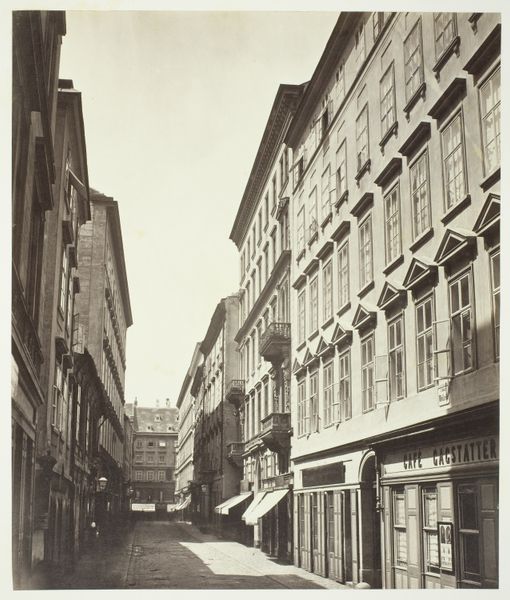
Dimensions: image: 458 x 568 mm
Copyright: © Thomas Struth | CC-BY-NC-ND 4.0 DEED, Photo: Tate
Editor: This is Thomas Struth’s "Via Giovanni Tappia, Naples 1989," a black and white photograph. It’s a pretty straightforward depiction of a street, but I’m struck by how much it reveals. What do you see in this piece? Curator: Struth highlights the built environment and its impact on everyday life. The laundry strung across the street speaks to domestic labor made visible, while the aging architecture reveals layers of social and economic processes. Editor: So, it's less about the aesthetic and more about what the image tells us about the people and the place? Curator: Precisely. The photograph documents the material realities of Naples in 1989, prompting questions about urban planning, resource allocation, and the lived experiences of its inhabitants. Editor: That’s a perspective I hadn’t considered. Thanks! Curator: My pleasure! It is fascinating how one’s viewpoint can shift the understanding of art, isn't it?
Comments
tate 7 months ago
⋮
http://www.tate.org.uk/art/artworks/struth-via-giovanni-tappia-naples-1989-p77749
Join the conversation
Join millions of artists and users on Artera today and experience the ultimate creative platform.
tate 7 months ago
⋮
Thomas Struth began taking photographs of industrialised cities when he was studying under Bernd Becher (born 1931) at the Düsseldorf Academy in the late 1970s. He has continued to explore and develop the theme for almost twenty years, focusing his attention on such cities as New York, Tokyo, Berlin and Naples. Since the mid 1980s he has also produced landscapes, portraits and photographs of visitors in museums. Struth's images of the urban environment concentrate on seemingly unspectacular streets and public spaces. He seeks to record the face of urban space, seeing the architectural environment as a site where a community expresses its history and identity. In interviews he has stated that his images aim to explore what public spaces 'might say about the people who live in these sites.' (Quoted in Gisbourne p.5.) In recording the urban environment, Struth deliberately refers to the tradition of black and white documentary photography, adopting a seemingly objective position. The compositions are simple and the photographs are neither staged nor digitally manipulated in post-production. Struth has said: 'for me it is more interesting to try and find out something from the real than to throw something subjective in front of the audience.' (Quoted in Minelli p.190.) However, in spite of a link to the reportage tradition, Struth avoids both its snapshot approach and its quest for the capture of a fleeting, spontaneous image. Rather he carefully selects the sites where, using long exposures he makes sharply focused images. In Via Giovanni Tappia, Naples 1989 Struth focuses his camera upon the Neapolitan cityscape. Employing a technique which he has used since the 1970s, Struth places the camera in the middle of the street at eye level. This creates a one-point perspective that leads the viewer's eye down the street. It also results in the road being as much the focus of the scene as the apartment buildings on either side. The perspectival effect is similar to that of many of the East German photographs, for example Hermannsgarten, Weissenfels, 1991 (Tate P20158). However the use of urban space is very different. In the austere German street there are few signs of the lives of the inhabitants. They appear to have withdrawn behind the facades of their homes without leaving a trace of their presence. In the Italian photograph, washing hangs from balconies and washing lines criss-cross the street. Some windows are open, others closed, and blinds and awnings break the facades. Cars are double parked and posters peel from the crumbling walls. Struth presents an image of a slightly scruffy, inner-city residential street which is filled with traces of activity and domestic life. Struth's images can thus been read as exploring differences in national character through the way urban space is inhabited. In making the photograph, Struth has attempted to keep human activity and incident to a minimum. A few people can be seen, but they are small and insignificant in comparison to the road and buildings which are the main subject of the image. Struth also avoids strong, dramatic contrasts of light and shade, preferring the uninflected, grey light of early morning which serves to enhance the neutral style of the images. The photograph transforms a familiar Western location into a into a subtly unfamiliar one. Concentrating on architecture and urban space rather than human activity, Struth presents the city in a way it is not normally seen. There are no hints as to how the image is to be interpreted and the viewer is thus led to linger over what might otherwise seem an un-noteworthy everyday vista. The spectator is invited to spend time with the image, to look and to question. As Struth has said, his work is intended to 'give pause' and thus resist immediate consumption. He seeks to bring about a 'move to investigative viewing' which is also a 'call to interact.' (Quoted in Buchloh p.31.) Further Reading: Mark Gisbourne, 'Struth', Art Monthly, no.176, May 1994, pp.3-9Giovanna Minelli, Another Objectivity, exhibition catalogue, Centre National des Arts Plastiques, Paris 1989, pp.189-194Benjamin Buchloh, Portraits: Thomas Struth, exhibition catalogue, Marian Goodman Gallery, New York 1990Thomas Struth: Strangers and Friends, exhibition catalogue, Institute of Contemporary Art, London 1994, reproduced p.79 Imogen Cornwall-JonesAugust 2001
